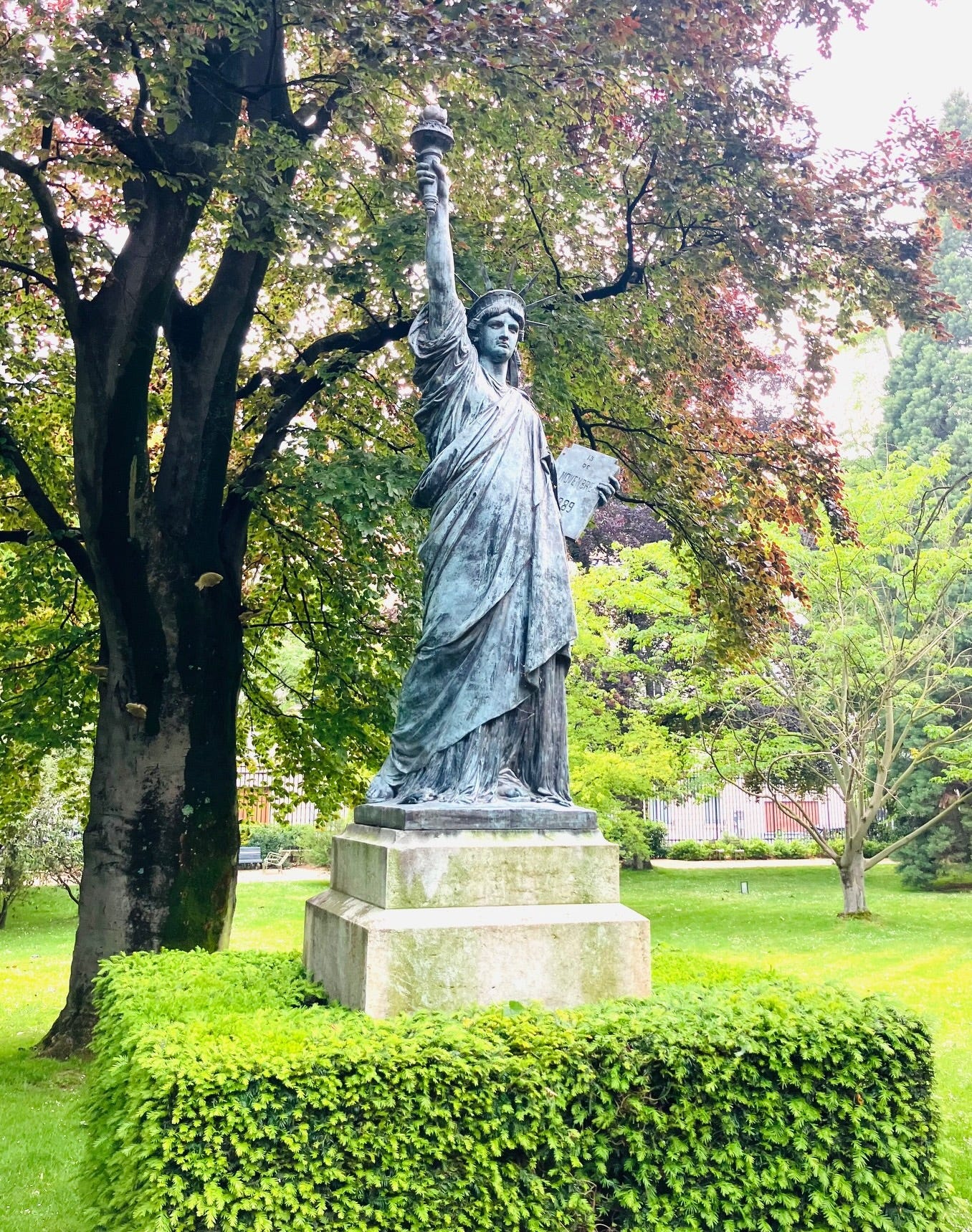A Tipping Point For Science and Society
To confront attacks on experts, expertise, and the rule of law, we must recommit to supporting an independent science and medical research infrastructure.
In the attractive town of Colmar in the heart of Alsace close to the border between France and Germany, the Auguste Bartholdi museum showcases the 20th century artist’s life and works. The town’s canal and its museum are worth visiting. If you cannot get to Alsace, you might be surprised to encounter a smaller version of Bartholdi’s most famous sculpture in the Musée d’Orsay in the center of Paris or a replica in the Luxembourg Gardens. But, seeing the original doesn’t require a trip to Paris. Instead, any one of the more than 60 million yearly visitors to New York City can wander to the southern edge of Manhattan’s Battery Park and look out across the water to Bartholdi’s monumental copper sculpture, symbol of the friendship between the US and France: The Statue of Liberty Enlightening the World.
This gift is the symbol of America’s aspirations – encompassing both its accomplishments and imperfections. And yet now, the return of a President and an isolationist movement draped in faux populism seems intent on undoing far more than America’s innovation economy. The administration’s attacks on science, expertise, and the rule of law threaten to snuff out the light that shines high above New York Harbor and that can be felt a world away.
But the light is not out yet.
As long as I can remember, I considered the Statue of Liberty as a beacon calling out to those seeking a better life, as it did to my great-grandparents leaving Eastern Europe more than 100 years ago. They found it, as did their children and children’s children. The beacon shone even when America faltered. I found the light already shining in an America that seemed boundless with possibility. I became a scientist, a career I view as a calling, and have tried to expand opportunities for early career researchers and translate our findings for the public good.
Scientists and artists are typically viewed as living in fundamentally separate worlds. The artist dreams and invents realities that do not exist. But to find meaning in empirical measurements and observations, the scientist must also dream – dreaming is one of our favorite pastimes; to look beyond what is, we imagine what could be.
Bartholdi’s gift represents what scientists hope to achieve: embodying an idea that does not just work in one place at one time under a certain condition. Science is built on the premise that it is possible to identify principles at scales from atoms to organisms to the Earth system to galaxies. It is then our choice – as scientists and societies – to harness the power of scientific discovery for better or worse.
There is precedent for a certain kind of choice. More than 135 years ago, the antecedent of the National Institutes of Health was founded as part of efforts to leverage growing understanding of the germ theory of disease to stop the spread of cholera, plague, smallpox and yellow fever. The roots of the modern NIH start in 1887, just one year after America officially dedicated Bartholdi’s gift. The NIH is now a central pillar of a science and medical research ecosystem that enables iterative cycles of innovation and investment that advances our well-being and economy.
This year, different choices are being made. On January 24, 2025, days after the inauguration, the Trump administration halted funding for ‘PEPFAR’ – a program that provides lifesaving medication for those living with HIV all across the world. The suspension of this program has already led to more than an estimated 40,000 preventable deaths including nearly 5,000 child deaths. Here in the United States, the administration’s cuts to federally supported HIV prevention programs are expected to lead to more than an estimated 75,000 additional infections, thousands of fatalities, and tens of billions of dollars in treatment costs over the next five years.
The suspension of cost-effective disease prevention efforts at home and abroad, layoffs of NIH scientists, and drastic cuts to medical research exemplify a world-view that government spending is presumed wasteful unless proven otherwise & even when proven otherwise. This world-view has been realized in budget cuts that cost more than they save, revocations of the welcome we offered to international student researchers at our universities, and executive orders that undermine an independent scientific and medical research ecosystem.
Since World War II, federal investment of science and medical research has driven a thriving, innovation economy. The economic returns are reason enough to continue this project of science. But America has always dreamed bigger. We can still forge a path for other nations to follow. To do so, we must call out the growing darkness and recommit to keep the beacons of liberty lit.


